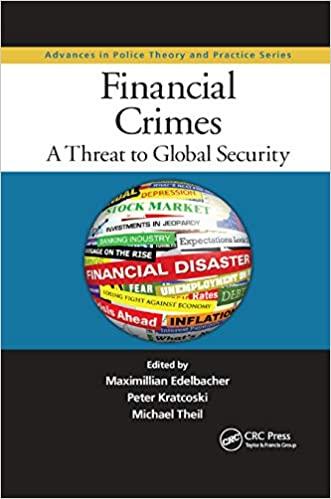1. What is the present equivalent value of the following future receipts? a. $1,000 5 years from now at 14% compounded semiannually. Answer: S508 b. $9,000 10 years from now at 8% compounded quarterly. c. $25,000 8 years from now at 9% compounded monthly. pounded weekly. d. $105,000 12 years from now at 13% com 2. What single equivalent amount will accumulate from each of the following investments? a. $1,500 in 5 years at 12% compounded semiannually. Answer: S2,686 b. $5,000 in 9 years at 16% compounded quarterly. c. S1,500 in 13 years at 6% compounded monthly d. S4,500 in 15 years at 13% compounded daily 3. What series of equal payments are equivalent to the following present amounts? a. S13,000 in 6 years at 8% compounded quarterly with quarterly payments. Answer: $688 b. $20,000 in 2 years at 15% compounded monthly with monthly payments. c. S6,000 in 4 years at 10% compounded quarterly with semiannual payments. d. $10,000 in 50 months at 9% compounded monthly with monthly payments. e. $1,500 in 5 years at 13% compounded annually with quarterly payments. 4. What series of equal payments are equivalent to the following future amounts? a. S8,000 in 6 years at 16% compound semiannually when payments are semiannual. Answer: $422 b. $4,000 in 12 years at 6% compounded quarterly when payments are annual. c. $25,000 in 10 years at 12% compounded monthly when payments are quarterly. d. $15,000 in 5 years at 8% compounded semiannually when payments are annual. e. $70,000 in 7 years at 20% compounded quarterly when payments are monthly. 5. What is the present value of the following series of prospective payments? a. S600 a month for 3 years at 13% compounded annually. b. $5,000 a year for 5 years at 16% compounded semiannually. c. $2,500 each year for 10 years at 8% compounded quarterly d. $14,000 each quarter for 4 years at 12% compounded monthly. 6. What is the accumulated value of each of the following series of payments? S5,000 semiannually for 10 years at 6% compounded monthly. 7. Find the equal annual payment series that would be equivalent to the following increasing series of payments if the interest rate is 12% (a) compounded annually; (b) compounded continuously Answer: b. S1,105 End of year Payments S600 S800 S1,000 S1,200 S1,400 S1,600 S1,800 Find the present value equivalent to the following geometrically decreasing series of payments. A first-year base ofs10,000 decreasing at 3% per year, to year 7 at an interest rate of 9% compounded continuously. Answer: $45,879 9. If compounding is quarterly, what effective annual interest rate and what nominal interest rate ll make the following values of P-S1,000; F- $3,000; n- 6 years equivalent. Answer: 20.1% per year; 18.7% compounded quarterly 1. What is the present equivalent value of the following future receipts? a. $1,000 5 years from now at 14% compounded semiannually. Answer: S508 b. $9,000 10 years from now at 8% compounded quarterly. c. $25,000 8 years from now at 9% compounded monthly. pounded weekly. d. $105,000 12 years from now at 13% com 2. What single equivalent amount will accumulate from each of the following investments? a. $1,500 in 5 years at 12% compounded semiannually. Answer: S2,686 b. $5,000 in 9 years at 16% compounded quarterly. c. S1,500 in 13 years at 6% compounded monthly d. S4,500 in 15 years at 13% compounded daily 3. What series of equal payments are equivalent to the following present amounts? a. S13,000 in 6 years at 8% compounded quarterly with quarterly payments. Answer: $688 b. $20,000 in 2 years at 15% compounded monthly with monthly payments. c. S6,000 in 4 years at 10% compounded quarterly with semiannual payments. d. $10,000 in 50 months at 9% compounded monthly with monthly payments. e. $1,500 in 5 years at 13% compounded annually with quarterly payments. 4. What series of equal payments are equivalent to the following future amounts? a. S8,000 in 6 years at 16% compound semiannually when payments are semiannual. Answer: $422 b. $4,000 in 12 years at 6% compounded quarterly when payments are annual. c. $25,000 in 10 years at 12% compounded monthly when payments are quarterly. d. $15,000 in 5 years at 8% compounded semiannually when payments are annual. e. $70,000 in 7 years at 20% compounded quarterly when payments are monthly. 5. What is the present value of the following series of prospective payments? a. S600 a month for 3 years at 13% compounded annually. b. $5,000 a year for 5 years at 16% compounded semiannually. c. $2,500 each year for 10 years at 8% compounded quarterly d. $14,000 each quarter for 4 years at 12% compounded monthly. 6. What is the accumulated value of each of the following series of payments? S5,000 semiannually for 10 years at 6% compounded monthly. 7. Find the equal annual payment series that would be equivalent to the following increasing series of payments if the interest rate is 12% (a) compounded annually; (b) compounded continuously Answer: b. S1,105 End of year Payments S600 S800 S1,000 S1,200 S1,400 S1,600 S1,800 Find the present value equivalent to the following geometrically decreasing series of payments. A first-year base ofs10,000 decreasing at 3% per year, to year 7 at an interest rate of 9% compounded continuously. Answer: $45,879 9. If compounding is quarterly, what effective annual interest rate and what nominal interest rate ll make the following values of P-S1,000; F- $3,000; n- 6 years equivalent. Answer: 20.1% per year; 18.7% compounded quarterly







